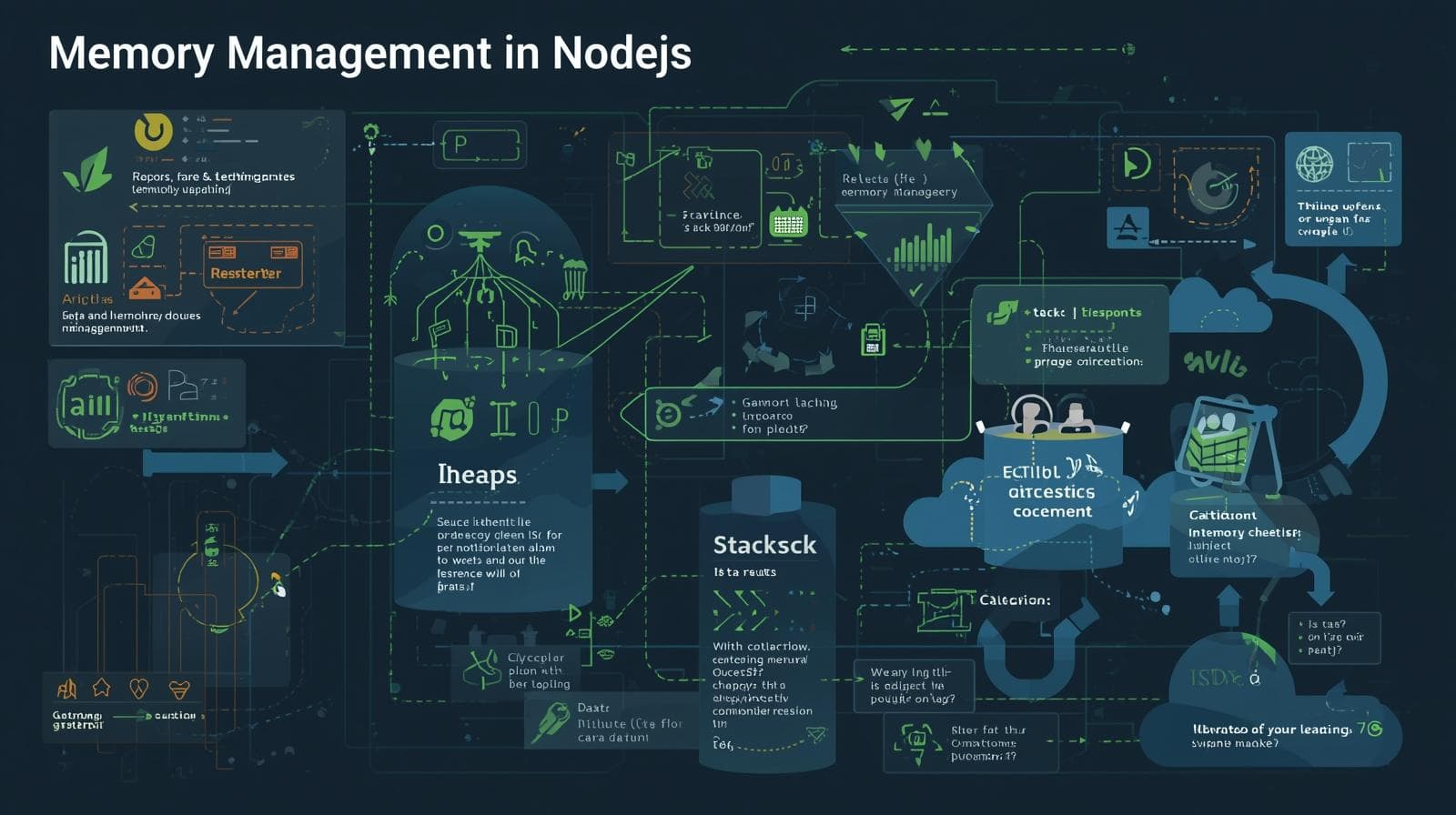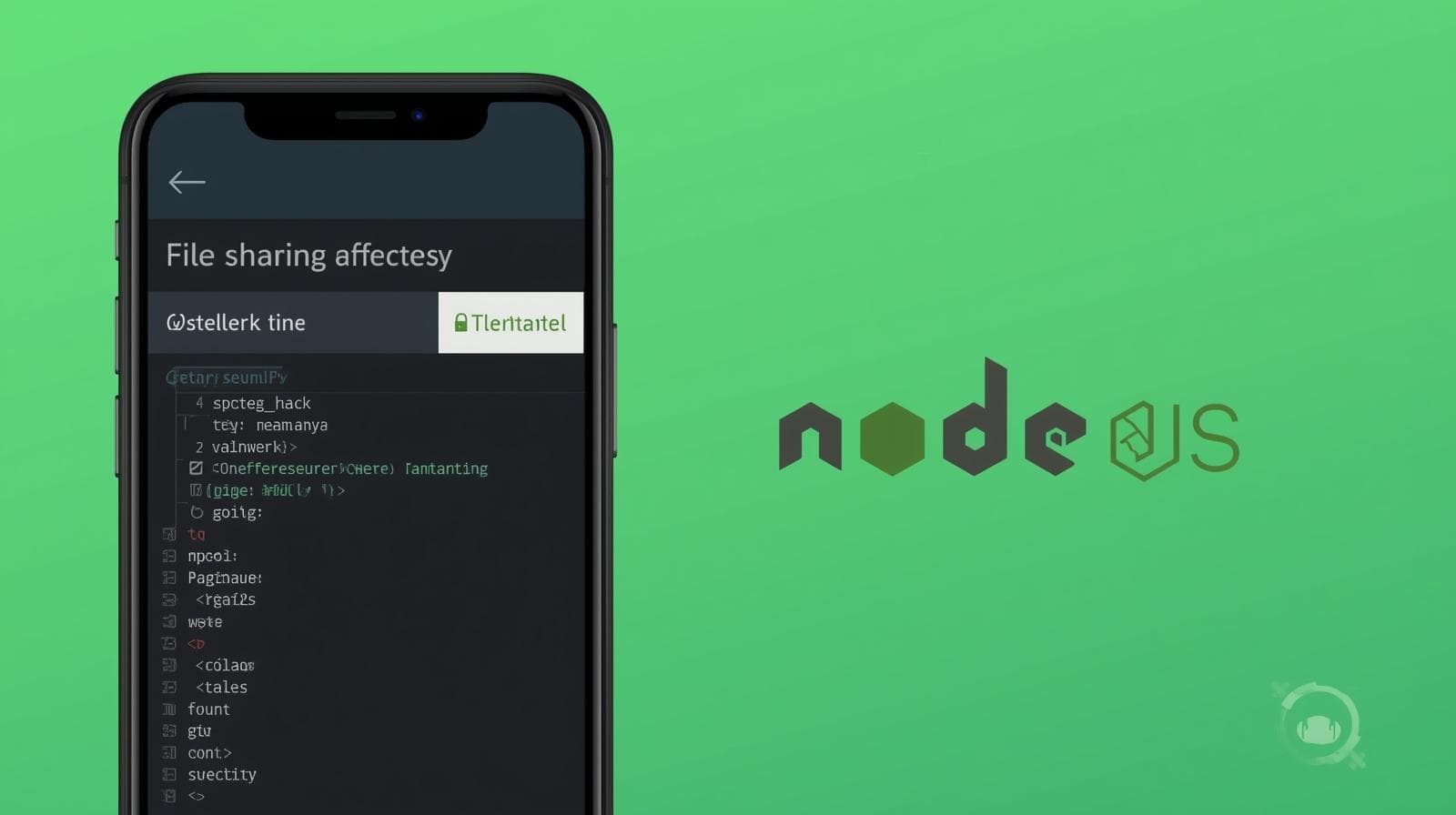Mastering Koa.js: A Modern Guide to Building Scalable Node.js Web Apps

Dive deep into Koa.js, the next-generation Node.js framework. Learn core concepts like middleware, context, and async/await with practical examples, best practices, and real-world use cases.

Mastering Koa.js: A Modern Guide to Building Scalable Node.js Web Apps
Unleashing the Power of Koa.js for Modern Node.js Development
If you've spent any time in the world of Node.js, you've undoubtedly heard of Express.js. It's the undisputed king, the framework that made server-side JavaScript accessible to millions. But what if I told you there's a framework that aims to be smaller, more expressive, and more robust for building web applications and APIs? Enter Koa.js.
Created by the same team behind Express, Koa is often described as "Express's modern, minimalist successor." It cuts away the legacy and cruft, allowing you to leverage the full power of modern JavaScript features like async/await to write cleaner, more maintainable code.
In this comprehensive guide, we're not just going to scratch the surface. We're going to dive deep into the philosophy of Koa, build applications from the ground up, explore its advanced features, and discuss when you should (and shouldn't) use it. By the end, you'll have a solid understanding of how to wield this powerful tool in your development arsenal.
Ready to build better Node.js applications? Let's get started.
What is Koa.js, Really? Beyond the "Hello World"
At its core, Koa.js is a new web framework designed by the team behind Express, aiming to be a smaller, more expressive, and more robust foundation for web applications and APIs. Koa leverages async functions to eliminate callback hell and greatly increase error-handling capabilities.
But that's the technical definition. Let's think of it in terms of a metaphor.
If building a web server is like handling a customer's request at a restaurant:
A basic Node.js HTTP server is like you being the chef, waiter, and cashier all at once. You have to do everything manually.
Express.js is like having a team of specialized staff (middleware) who each handle one task: one takes the order, one cooks the food, one serves it. It's organized and powerful.
Koa.js is like a high-end, futuristic restaurant where the staff is equipped with advanced tech. The flow of information is seamless, tasks are handled concurrently without getting in each other's way, and if something goes wrong, the system pinpoints the issue immediately.
Koa doesn't bundle any middleware within its core. Unlike Express, which comes with a router, etc., Koa is incredibly minimal. This might seem like a disadvantage, but it's actually its greatest strength. It gives you, the developer, unparalleled freedom to plug in only the packages you need, keeping your application lean and fast.
Key Characteristics of Koa:
Middleware Cascade: Koa middleware flows in a stack-like manner, giving you more fine-grained control over the request/response cycle.
Context Object: Instead of dealing with separate Node's
requestandresponseobjects, Koa provides a singleContextobject (usually abbreviated asctx) that encapsulates both.Async/Await All the Way: Koa is built from the ground up to use
asyncfunctions. This makes your code non-blocking and easy to read, without the infamous "callback hell."No Bundled Middleware: You have the freedom to choose the best libraries for your specific needs (e.g., routing, body parsing, templating).
Setting Up Your First Koa Application
Enough theory; let's get our hands dirty. Setting up a Koa server is straightforward.
Step 1: Initialize your project.
Create a new directory and initialize a Node.js project.
bash
mkdir my-koa-app
cd my-koa-app
npm init -yStep 2: Install Koa.
Koa requires Node.js v7.6.0 or higher because it relies on async/await.
bash
npm install koaStep 3: Create your app file.
Create a file named app.js and write the classic "Hello World."
javascript
// app.js
const Koa = require('koa');
const app = new Koa();
// Define middleware
app.use(async ctx => {
ctx.body = 'Hello, fearless developers from CoderCrafter!';
});
// Start the server
const port = process.env.PORT || 3000;
app.listen(port, () => {
console.log(`🚀 Koa server is running on http://localhost:${port}`);
});Step 4: Run your server.
bash
node app.jsNavigate to http://localhost:3000 in your browser, and you should see the greeting. Congratulations! You've just created your first Koa server. It might look similar to Express, but the magic lies beneath the surface.
The Heart of Koa: Understanding Middleware and the Context (ctx)
To truly master Koa, you need to understand two fundamental concepts: Middleware and the Context Object.
1. The Context Object (ctx)
In Koa, the ctx object is your all-in-one toolbox for dealing with the web request and response. It combines Node's request and response objects into a single, convenient object.
Let's look at some common properties:
ctx.request: The Koa Request object (not Node's native one).ctx.response: The Koa Response object.ctx.method: The request method (e.g., GET, POST).ctx.url/ctx.path: The request URL/path.ctx.status: Set the HTTP response status code (e.g.,ctx.status = 404).ctx.body: Set the response body. This can be a string, a buffer, an object, or a stream.
Here's a more detailed example:
javascript
app.use(async ctx => {
// Reading from the request
console.log(`${ctx.method} ${ctx.url}`);
// Setting the response
ctx.status = 200;
ctx.body = {
message: 'This is a JSON response!',
path: ctx.path,
method: ctx.method
};
// Koa automatically sets the Content-Type to application/json
});2. The Middleware Cascade: Koa's Superpower
This is where Koa truly shines. Koa middleware is organized in a stack and runs in a "cascading" fashion.
Imagine a stack of functions, each being an async function. When a request comes in, it starts at the first middleware and "goes downstream" through all of them. Then, the request "goes upstream" back through the middleware, allowing each one to do any final processing.
This is best understood with a code example:
javascript
const Koa = require('koa');
const app = new Koa();
// Middleware 1
app.use(async (ctx, next) => {
console.log('Step 1: Entering the first middleware');
const start = Date.now();
await next(); // Pause and pass control to the next middleware
const ms = Date.now() - start;
console.log(`Step 4: First middleware again. Response took ${ms}ms.`);
ctx.set('X-Response-Time', `${ms}ms`); // Set a custom header on the way back up
});
// Middleware 2
app.use(async (ctx, next) => {
console.log('Step 2: Entering the second middleware');
await next(); // Pass control to the next middleware (our response)
console.log('Step 3: Second middleware again.');
});
// Final middleware that sets the response
app.use(async ctx => {
console.log('Step 3: Setting the response body');
ctx.body = 'Hello, Cascade!';
});
app.listen(3000);Run this code and check your terminal. You'll see the logs in this order:
Step 1: Entering the first middlewareStep 2: Entering the second middlewareStep 3: Setting the response bodyStep 3: Second middleware again.Step 4: First middleware again. Response took ...ms.
This "downstream, then upstream" flow is incredibly powerful. It allows you to:
Measure response time (as in the example).
Perform logging before and after the request.
Handle errors in a centralized way.
Compress responses on the way back up.
Building a Real-World Koa Application: A Simple REST API
Let's build something more practical: a simple REST API for managing a list of books. We'll need routing, body parsing, and structured responses.
Step 1: Install necessary packages.
We'll use @koa/router for routing and koa-bodyparser to parse JSON request bodies.
bash
npm install koa @koa/router koa-bodyparserStep 2: Build the API.
Create a new file api.js.
javascript
const Koa = require('koa');
const Router = require('@koa/router');
const bodyParser = require('koa-bodyparser');
const app = new Koa();
const router = new Router();
// Our in-memory "database"
let books = [
{ id: 1, title: 'The Clean Coder', author: 'Robert C. Martin' },
{ id: 2, title: 'Designing Data-Intensive Applications', author: 'Martin Kleppmann' }
];
// Middleware
app.use(bodyParser()); // Parse JSON bodies first
// Logger Middleware
app.use(async (ctx, next) => {
await next();
const rt = ctx.response.get('X-Response-Time');
console.log(`${ctx.method} ${ctx.url} - ${rt}`);
});
// Response Time Middleware
app.use(async (ctx, next) => {
const start = Date.now();
await next();
const ms = Date.now() - start;
ctx.set('X-Response-Time', `${ms}ms`);
});
// Routes
// GET all books
router.get('/books', (ctx) => {
ctx.body = {
status: 'success',
data: books
};
});
// GET a single book by ID
router.get('/books/:id', (ctx) => {
const id = parseInt(ctx.params.id);
const book = books.find(b => b.id === id);
if (book) {
ctx.body = {
status: 'success',
data: book
};
} else {
ctx.status = 404;
ctx.body = {
status: 'error',
message: 'Book not found.'
};
}
});
// POST a new book
router.post('/books', (ctx) => {
const { title, author } = ctx.request.body;
if (!title || !author) {
ctx.status = 400;
ctx.body = {
status: 'error',
message: 'Title and author are required.'
};
return;
}
const newBook = {
id: books.length + 1,
title,
author
};
books.push(newBook);
ctx.status = 201; // Created
ctx.body = {
status: 'success',
data: newBook
};
});
// Use the routes
app.use(router.routes()).use(router.allowedMethods());
// Start the server
app.listen(3000, () => {
console.log('📚 Book API is running on http://localhost:3000');
});This API now has:
GET /books- Fetch all books.GET /books/:id- Fetch a single book.POST /books- Create a new book.
You can test it using tools like Postman or Thunder Client (VS Code extension). This structure is the foundation for any robust RESTful service built with Koa.
Real-World Use Cases for Koa.js
Koa isn't just for toy projects. It excels in several production scenarios:
Single Page Applications (SPAs) and Static Sites: Koa is excellent for serving static files and acting as a backend API for SPAs built with React, Vue, or Angular. Its minimal overhead makes it fast and efficient.
RESTful and GraphQL APIs: Koa's lightweight nature and excellent async support make it a perfect candidate for building high-performance APIs, whether RESTful or as a server for GraphQL (with
apollo-server-koaor similar).Real-time Applications: While not a real-time framework itself, Koa integrates beautifully with WebSocket libraries like
wsto build real-time features like chats, live notifications, and collaborative tools.Microservices: In a microservices architecture, where small, focused services are key, Koa's minimal footprint and modularity are huge advantages. Each service can be built with only the dependencies it needs.
Best Practices and Common Pitfalls
As you build with Koa, keep these tips in mind:
Error Handling: Always use a dedicated error-handling middleware at the top of your stack.
javascript
app.use(async (ctx, next) => { try { await next(); } catch (err) { ctx.status = err.statusCode || err.status || 500; ctx.body = { status: 'error', message: err.message }; // Emit the error for centralized logging ctx.app.emit('error', err, ctx); } });Security: Use middleware like
koa-helmetto set important security headers. Always validate and sanitize user input.Structure Your Project: Don't put all your code in one file. Organize your project into logical directories like
routes/,controllers/,models/, andmiddleware/.Use Environment Variables: Use
dotenvto manage configuration like database connections and API keys. Never hardcode them.Avoid Blocking the Event Loop: Remember, Koa's power comes from async operations. If you have a CPU-intensive task, offload it to a worker thread or a separate service to avoid blocking incoming requests.
Mastering these patterns is crucial for professional software development. To learn professional software development courses such as Python Programming, Full Stack Development, and MERN Stack, visit and enroll today at codercrafter.in. Our structured curriculum is designed to take you from fundamentals to building deployable, production-ready applications.
Koa.js vs. Express.js: Which One Should You Choose?
This is the million-dollar question. Here’s a quick, honest comparison:
Philosophy: Express is a "batteries-included-but-optional" framework. Koa is "minimalist-by-design."
Async Handling: Express relies on callbacks, leading to potential callback hell. Koa uses
async/awaitnatively, leading to cleaner, more linear code.Middleware: Express middleware is linear and based on callbacks. Koa middleware is cascading and based on
async/await, offering more control.Learning Curve: Express is easier to start with due to its vast ecosystem and tutorials. Koa has a steeper learning curve because you need to understand async/await and often need to choose your own middleware.
Ecosystem: Express has a massive, mature ecosystem. Koa's ecosystem is smaller but growing and is generally of high quality.
Choose Express if: You're a beginner, you need to get a project off the ground quickly, or you rely heavily on specific Express-compatible middleware.
Choose Koa if: You're comfortable with modern JavaScript, you value code elegance and maintainability, you're building a new API from scratch, and you want finer control over the request/response lifecycle.
Frequently Asked Questions (FAQs)
Q1: Is Koa.js a replacement for Express.js?
It's positioned as a modern successor, not a direct replacement. Express is still wildly popular and stable. Koa offers a different, more modern paradigm.
Q2: Can I use Express middleware with Koa?
Generally, no. Express middleware is built around callbacks, while Koa is built around async/await. However, many popular Express middleware have Koa-specific versions (e.g., koa-bodyparser is the Koa version of body-parser).
Q3: How do I handle file uploads in Koa?
You can use the @koa/multer package, which is a middleware for handling multipart/form-data, the primary use case for file uploads.
Q4: Is Koa.js production-ready?
Absolutely. Koa is used by major companies like Alibaba and Airbnb in production. It's a stable, well-maintained framework.
Q5: How do I connect to a database like MongoDB or PostgreSQL?
Koa itself is database-agnostic. You would use a Node.js driver (e.g., mongoose for MongoDB or pg for PostgreSQL) within your middleware or controllers, just like you would in any other Node.js application.
Conclusion: Elevate Your Node.js Journey with Koa
Koa.js represents a significant evolution in the Node.js framework landscape. By embracing modern JavaScript features and a minimalist, cascading middleware model, it empowers developers to write more robust, readable, and maintainable server-side code. While it may require a slight mindset shift from Express, the payoff in code quality and developer experience is immense.
We've journeyed from a simple "Hello World" to building a functional REST API, exploring the core concepts that make Koa unique. The path to mastering backend development is filled with choices, and Koa is a powerful one to have in your toolkit.
If you're excited by the potential of Koa and want to build a strong foundation in modern web development, we have just the right path for you. To learn professional software development courses such as Python Programming, Full Stack Development, and MERN Stack, visit and enroll today at codercrafter.in. Let us help you craft your future in code.









